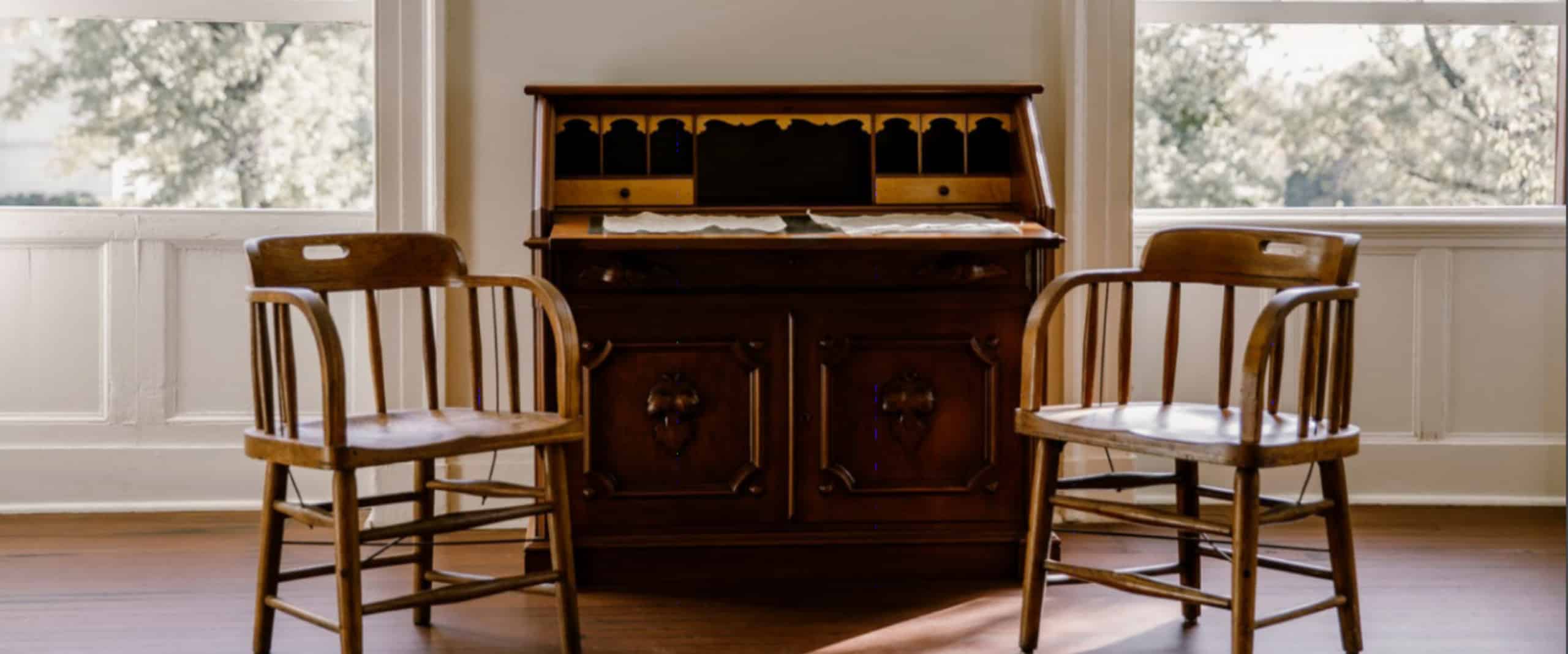
Even in a presidential term defined by turmoil, the early months of 1862 were particularly difficult for President Lincoln. Little progress was made by the Union army on the battlefield, leading to growing frustration among the public with Lincoln’s administration and the war effort. Personally, Lincoln was devastated by the death of his son Willie in February, and was not afforded the time and space to grieve properly. It was in this time of personal and national suffering that Lincoln became resolute that the emancipation of slaves in states that had seceded from the Union would be necessary to win the war.
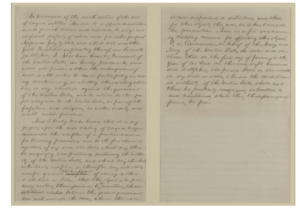
Draft of the Preliminary Emancipation Proclamation. Library of Congress.
In July of 1862, while staying at the Soldiers’ Home, Lincoln penned the first draft of the Emancipation Proclamation which he read aloud to his Cabinet on July 22nd. He likely continued revising the document throughout the summer at both his office the White House and back home at the Cottage. On September 22, he delivered the preliminary Emancipation Proclamation, declaring that as of January 1, 1863, all enslaved people in the states currently engaged in rebellion against the Union “shall be then, thenceforward, and forever free.”
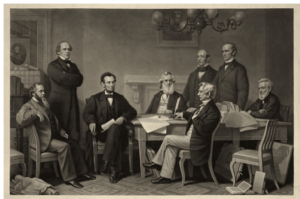
“The First Reading of the Emancipation Proclamation before the Cabinet.” Painted by F.B. Carpenter; engraved by A.H. Ritchie, 1866. Prints and Photographs Division, Library of Congress.
It is safe to assume that Lincoln spent many hours at his desk at the Soldiers’ Home during that summer, writing and revising drafts of the Proclamation, writing letters to members of his Cabinet, and toiling over difficult wartime decisions.
But what became of this desk?
According to research done by White House Associate Curator Melissa C. Naulin and historian Matthew R. Costello, the desk was displayed for years as part of a museum exhibit in President Lincoln’s Cottage (known at that time as Anderson Cottage). In 1922, the desk was moved from the Cottage and put to use at the Soldiers’ Home Dairy Office. In 1930 it was transferred to the White House Collection. It has been in the Lincoln Bedroom of the White House since the Truman administration.
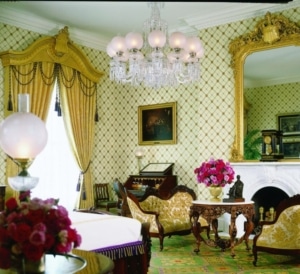
Photo: White House Historical Association
But those interested in visualizing President Lincoln’s desk in person do not need access to the Lincoln Bedroom. President Lincoln’s Cottage is home to a perfect replica.
In 2006, the National Trust for Historic Preservation commissioned master craftsmen Fred Hoover and Rob McCullough of Paradise, Pennsylvania to create the replica. They were able to visit the Lincoln Bedroom and see the original desk to photograph, meticulously measure, and take impressions of the moldings in clay.
Built primarily of walnut with birds-eye maple accents and a fall-front writing surface, the desk is a near-exact replica of the one used by Lincoln. Fred even processed the leather used for the writing surface and the stamp used to create the ornamental indentations around its perimeter. When he couldn’t find hinges that matched the original, he machined them himself out of steel.
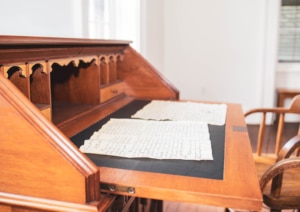
Photo: Punch Digital Strategies
Recreating the drawer handles proved an interesting challenge. During Lincoln’s era, the handles were likely made of carved wood. Years later they were replaced by brass handles which remain to this day. The craftsmen researched similar desks of the period, drew a design, and masterfully carved the ornate flower drawer pulls that ended up on the replica.
Hoover and McCullough have done work for other historic sites in the region, including Gunston Hall and Mount Vernon. They also carved the window cornices in the Lincoln Bedroom of the White House, adjacent to Lincoln’s original desk.
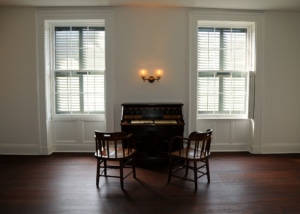
Photo: Carol M. Highsmith
For more information on furniture at President Lincoln’s Cottage, check out season four, episode two of the Q & Abe podcast titled “Where’s all the furniture?”.
Sources & Additional Reading
- The Emancipation Proclamation – President Lincoln’s Cottage | A Home for Brave Ideas (lincolncottage.org)
- Melissa C. Naulin and Matthew R. Costello, “Considering the Furnishing of the Lincolns’ Summer Cottage at the Soldiers’ Home” White House History Quarterly, “On the Move”
Seth Young is the Historic Buildings and Grounds Technician at President Lincoln’s Cottage.
